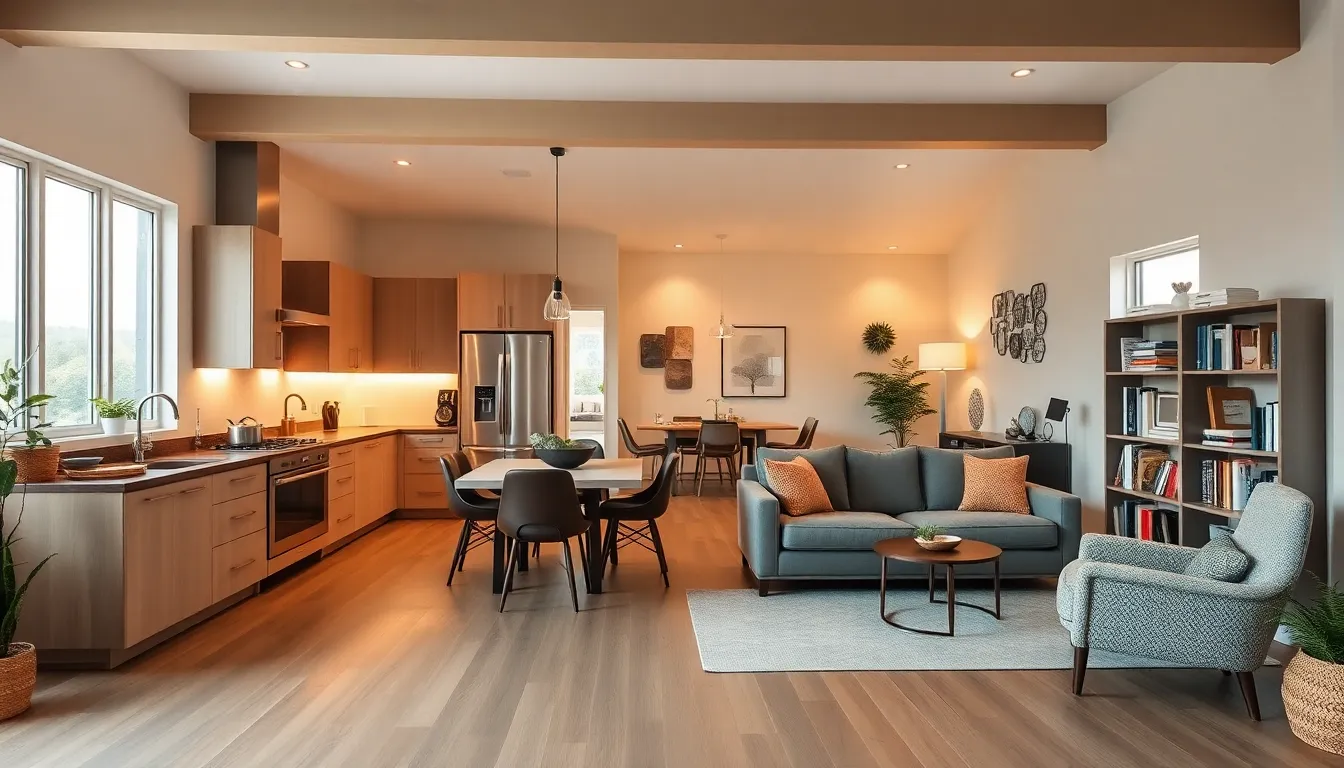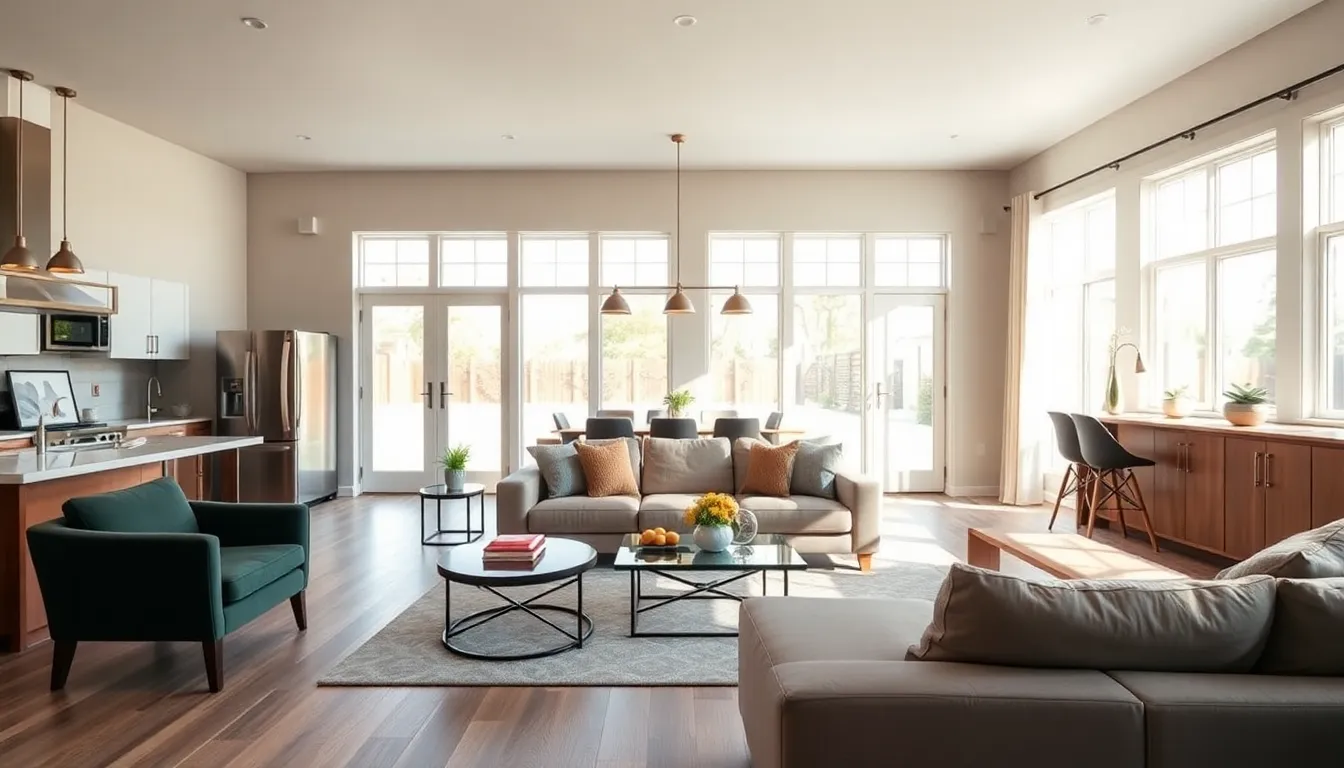Ah, retirement. The time to kick back, relax, and, wait for it, start knocking down walls? Yes, that’s right. Home remodeling for retirement is not just about making your home aesthetically pleasing: it’s about creating a sanctuary that caters to your needs as you age gracefully (or humorously, let’s be real). In this guide, we’ll explore essential aspects of remodeling that will have you yelling, ‘I love my home.’ while sipping on that well-deserved morning coffee. So, grab a snack, and let’s jump into the fun world of turning your house into the ultimate retirement retreat.
Table of Contents
ToggleUnderstanding Your Needs In Retirement

As retirement approaches, many begin to reassess their living situations. What once seemed functional might now require reevaluation. He or she might think, “Is this house really going to be my castle for the next couple of decades?” Understanding personal needs becomes crucial.
Think about daily routines. Will cooking remain a joyous task or a chore? Does the living room accommodate family gatherings? Each phase of life demands different spaces. Whether it’s spacious kitchens for hosting relatives or tranquil nooks for curling up with a book, every inch counts in a retirement-ready home.
Also, emotional and physical wellbeing becomes paramount. Spaces should elevate moods and instigate ease. Will the walkways be broad enough? Are there areas to cultivate hobbies? The focus here is transforming a house into a haven that resonates with personal tastes and future aspirations.
Factors To Consider When Remodeling
Remodeling isn’t a mere act of renovation. It’s a thoughtful process that takes several factors into account. Here are two crucial aspects you shouldn’t overlook:
How To Create A Comfortable Living Space
When plotting out your remodel, comfort should reign supreme. Soft, plush seating, natural light flowing through expansive windows, and inviting tones might seem simple, but they bear immense importance. Opt for open floor plans that help movement and connection.
Consider light fixtures, too. Natural light can dramatically affect mood. More sunlight equals more cheer. Not to mention, creating spaces that allow social interactions can also stave off feelings of solitude.
Accessibility Features To Carry out
As we gracefully age, accessibility becomes a non-negotiable feature of any home remodel. Sturdy grab bars in bathrooms, lower kitchen countertops, and zero-entry showers transform everyday tasks and significantly enhance safety. It doesn’t hurt to add non-slip flooring for that extra layer of reassurance. Design can be beautiful while still providing safety.
Energy Efficiency And Sustainability
Who doesn’t love saving a bit of cash while being environmentally savvy? Energy-efficient upgrades aren’t just good for your wallet: they contribute to a sustainable future.
Consider hybrid heating and cooling systems, energy-efficient appliances, and well-insulated windows. These choices not only decrease energy bills but also create a more pleasant living environment all year round.
Incorporating sustainable materials into your remodel is equally important. Think reclaimed wood, bamboo flooring, or recycled glass countertops. These choices speak volumes about both your aesthetic preferences and your commitment to the environment. Plus, they often require less maintenance, what a win.
Budgeting For Your Remodeling Project
Ah, budgeting, the necessary evil of any remodeling try. Each detail, from flooring choices to decorative elements, comes with a price tag. So how does one navigate this minefield of expenses?
Start by determining a realistic budget. It’s vital to assess savings, potential financing options, and any available grants for accessibility modifications. When you know your financial parameters, choices become easier and less painful.
Consider allocating funds for unexpected expenses, too. Whether it’s hidden structural issues or delightful splurges that fell into the cart, setting aside a contingency budget ensures fewer surprises down the line. Plus, who doesn’t love a little wiggle room?
Working With Professionals vs. DIY
The age-old question arises: Should you tackle this remodeling project yourself or enlist professional assistance? Both paths have their merits, but the right choice generally hinges on the scope of your project.
If you fancy yourself a DIY maven, minor upgrades might be right up your alley, think fresh paint or swapping out fixtures. But, larger renovations often require professional expertise.
Consider engaging architects or interior designers who specialize in aging-in-place designs. They can transform potential pitfalls into opportunities for enhanced functionality. Yet, if budget constraints loom, don’t shy away from reaching out to handy friends or local contractors.


